Transversal of parallel lines
Key notes:
- Definition of a Transversal:
- A transversal is a line that crosses two or more lines at distinct points.
- Parallel Lines:
- Parallel lines are lines in the same plane that never intersect. They maintain a constant distance apart.
- Angles Formed by a Transversal:
- When a transversal intersects parallel lines, several types of angles are formed:
- Corresponding Angles: Angles in the same position at each intersection. They are equal.
- Alternate Interior Angles: Angles on opposite sides of the transversal and inside the parallel lines. They are equal.
- Alternate Exterior Angles: Angles on opposite sides of the transversal and outside the parallel lines. They are equal.
- Consecutive Interior Angles: Angles on the same side of the transversal and inside the parallel lines. Their measures add up to 180° (they are supplementary).
- When a transversal intersects parallel lines, several types of angles are formed:
Properties of Angles with Transversals
- Corresponding Angles Postulate: If a transversal intersects two parallel lines, then each pair of corresponding angles is equal.
- Alternate Interior Angles Theorem: If a transversal intersects two parallel lines, then each pair of alternate interior angles is equal.
- Alternate Exterior Angles Theorem: If a transversal intersects two parallel lines, then each pair of alternate exterior angles is equal.
- Consecutive Interior Angles Theorem: If a transversal intersects two parallel lines, then each pair of consecutive interior angles is supplementary (adds up to 180°).

Learn with an example
🔔 KM and NP are parallel lines.
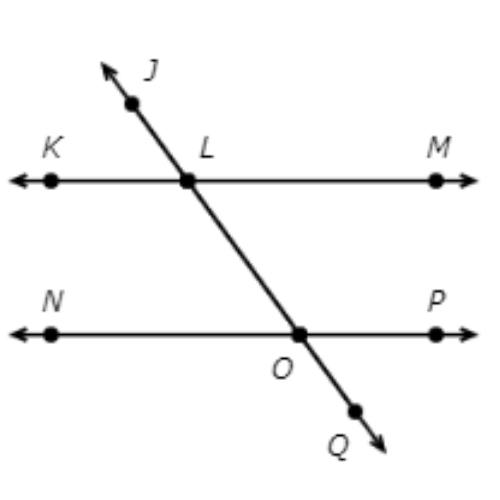
Which angles are alternate interior angles?
- ∠NOL and ∠NOQ
- ∠NOL and ∠MLO
- ∠NOL and ∠POQ
- ∠NOL and ∠KLJ
The transversal is JQ
First find ∠NOL.
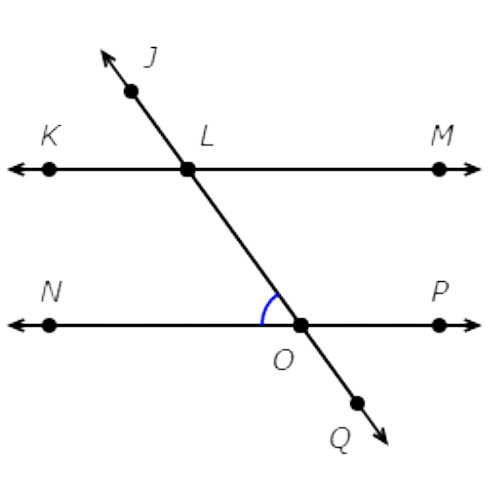
Check each pair of angles.
∠NOL and ∠NOQ are not alternate interior angles. They are on the same side of the transversal.
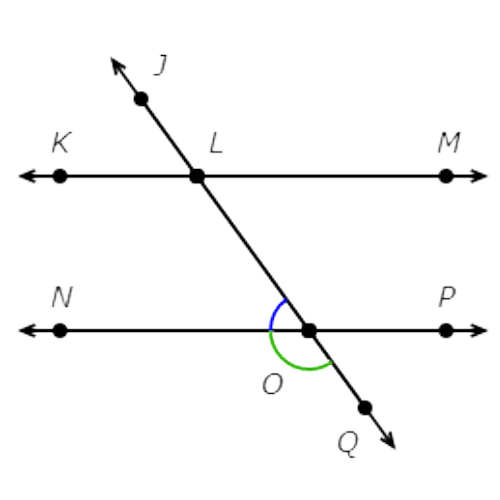
∠NOL and ∠MLO are alternate interior angles.
They are between KM and NP and are on opposite sides of the transversal, but they are not adjacent.
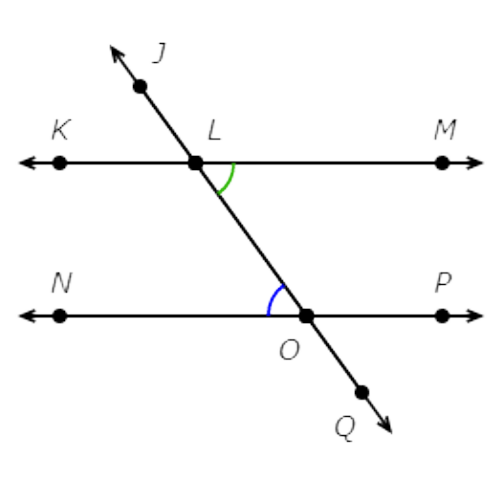
∠NOL and ∠POQ are not alternate interior angles. ∠POQ is not between the parallel lines.
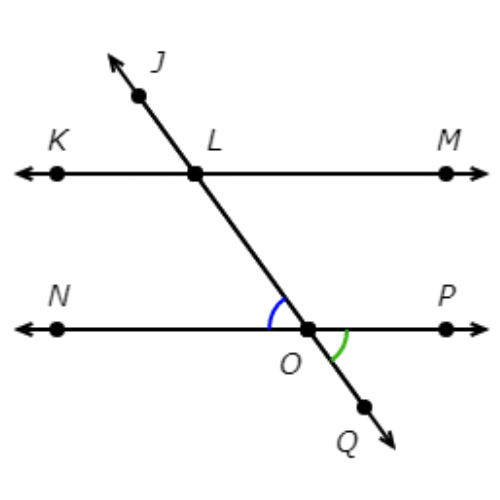
∠NOL and ∠KLJ are not alternate interior angles. They are on the same side of the transversal.
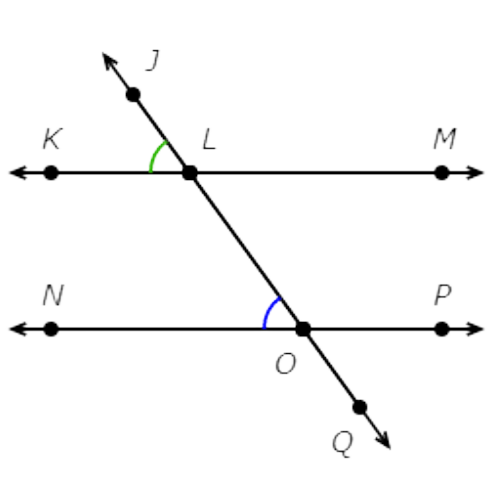
🔔 BD and EG are parallel lines.
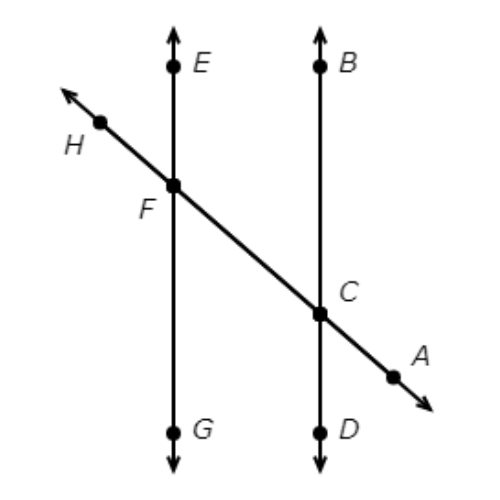
Which angles are adjacent angles?
- ∠DCF and ∠EFH
- ∠DCF and ∠BCA
- ∠DCF and ∠GFH
- ∠DCF and ∠BCF
First find ∠DCF.
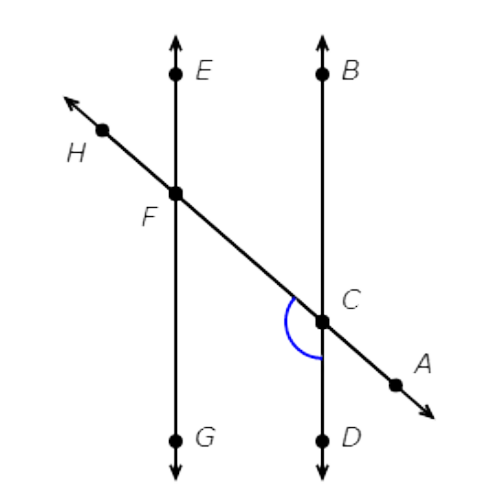
Check each pair of angles.
∠DCF and ∠EFH are not adjacent angles. They do not have a common side.
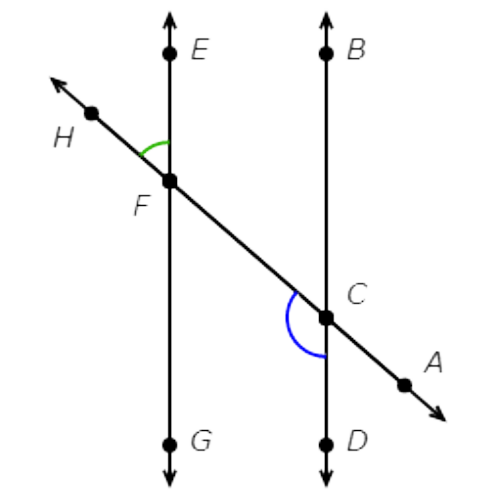
∠DCF and ∠BCA are not adjacent angles. They do not have a common side.
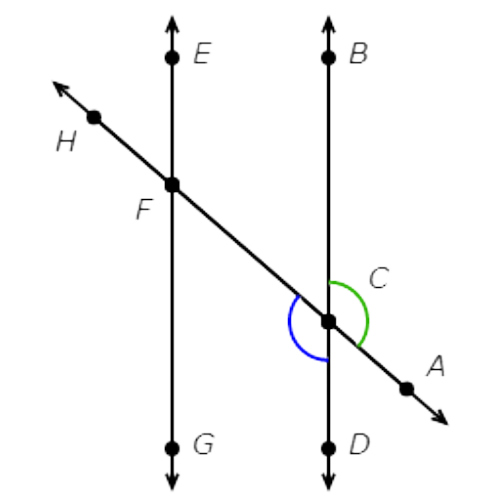
∠DCF and ∠GFH are not adjacent angles. They do not have a common side.
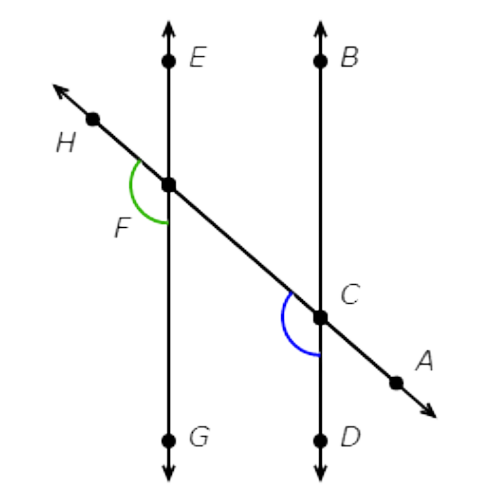
∠DCF and ∠BCF are adjacent angles.
They share the ray CF
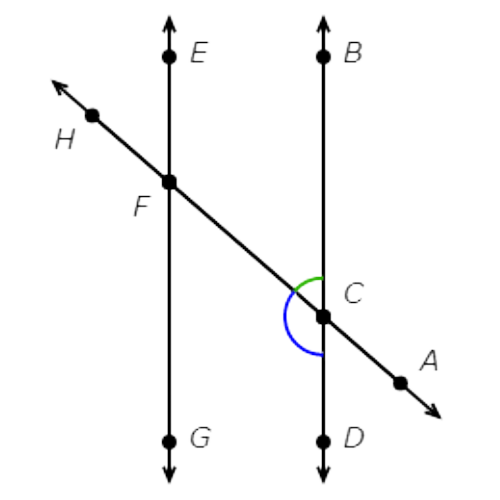
🔔 CE and FH are parallel lines.
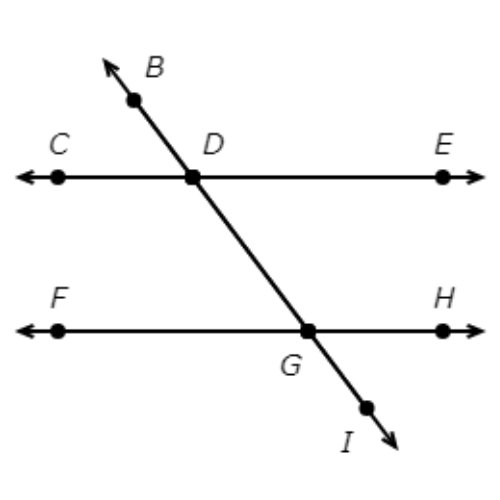
Which angles are adjacent angles?
- ∠EDB and ∠HGD
- ∠EDB and ∠CDG
- ∠EDB and ∠CDB
- ∠EDB and ∠FGD
First find ∠EDB.
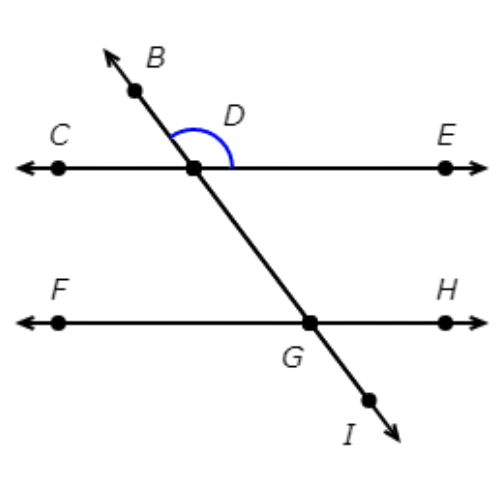
Check each pair of angles.
∠EDB and ∠HGD are not adjacent angles. They do not have a common side.
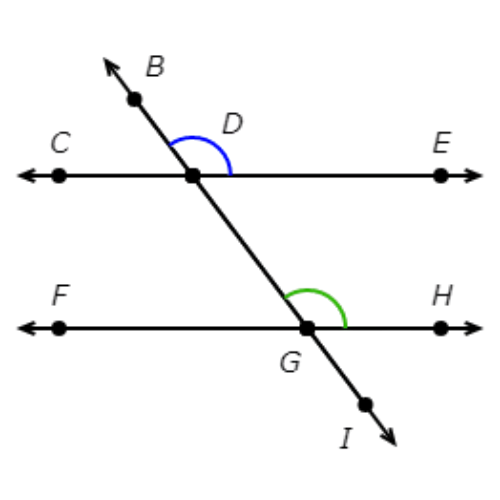
∠EDB and ∠CDG are not adjacent angles. They do not have a common side.
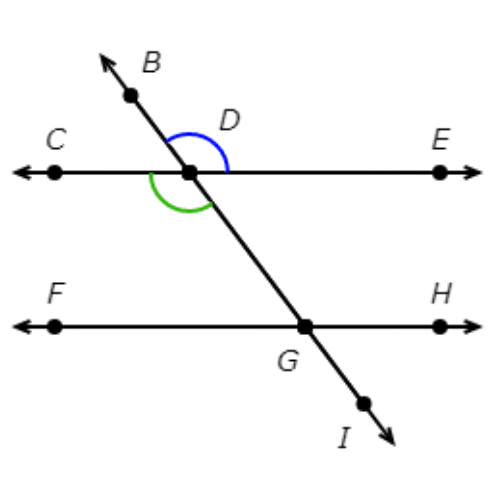
∠EDB and ∠CDB are adjacent angles.
They share the ray DB
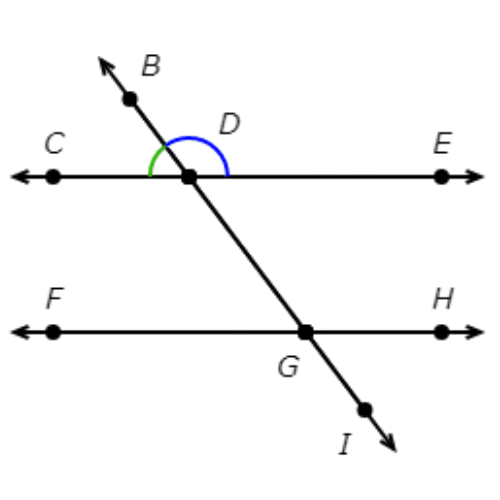
∠EDB and ∠FGD are not adjacent angles. They do not have a common side.
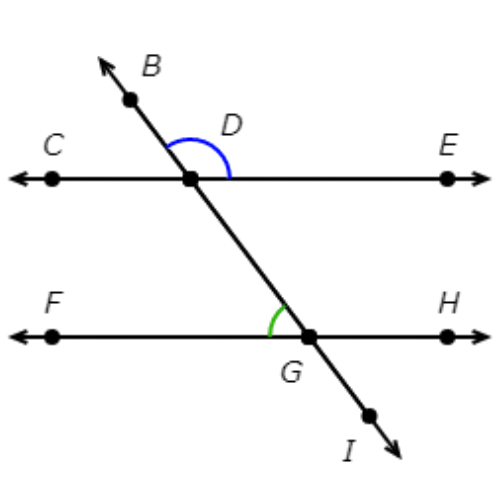
Let’s practice!🖊️

